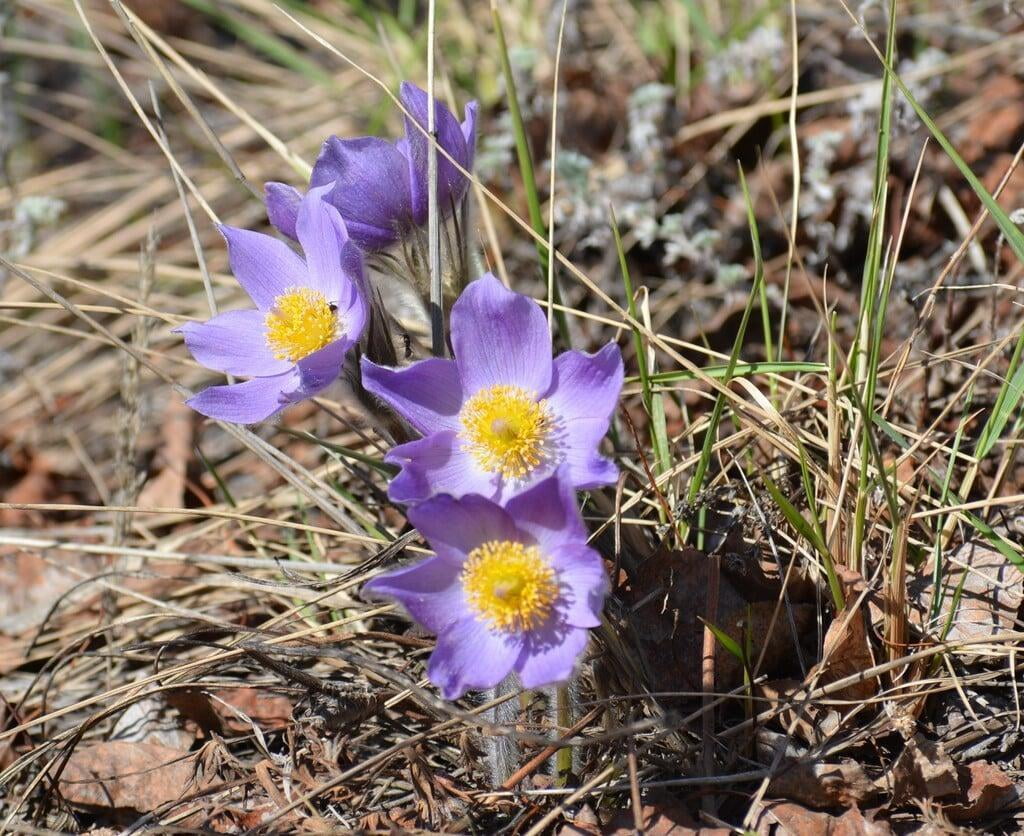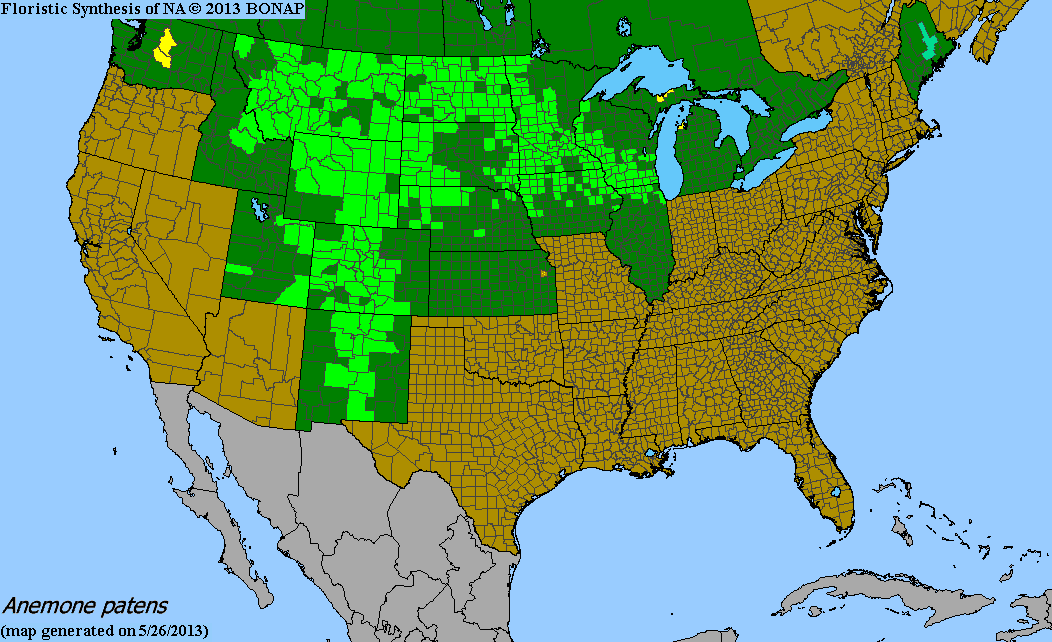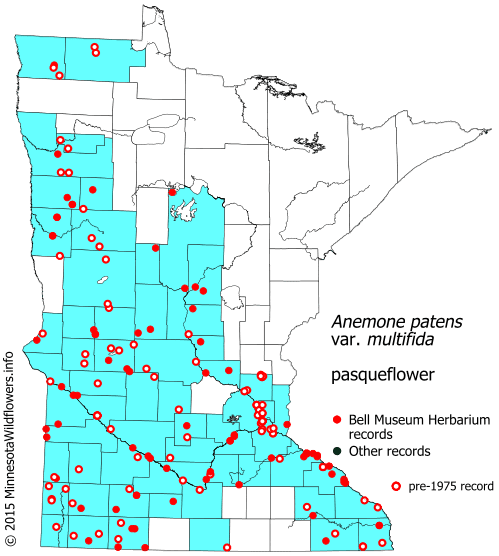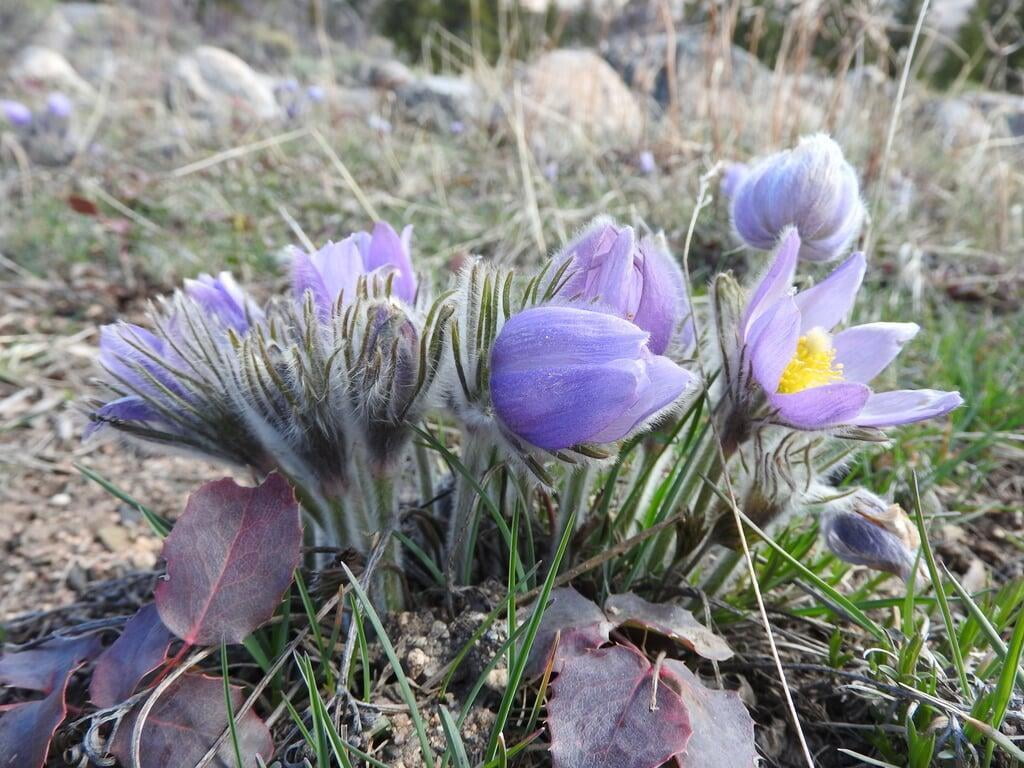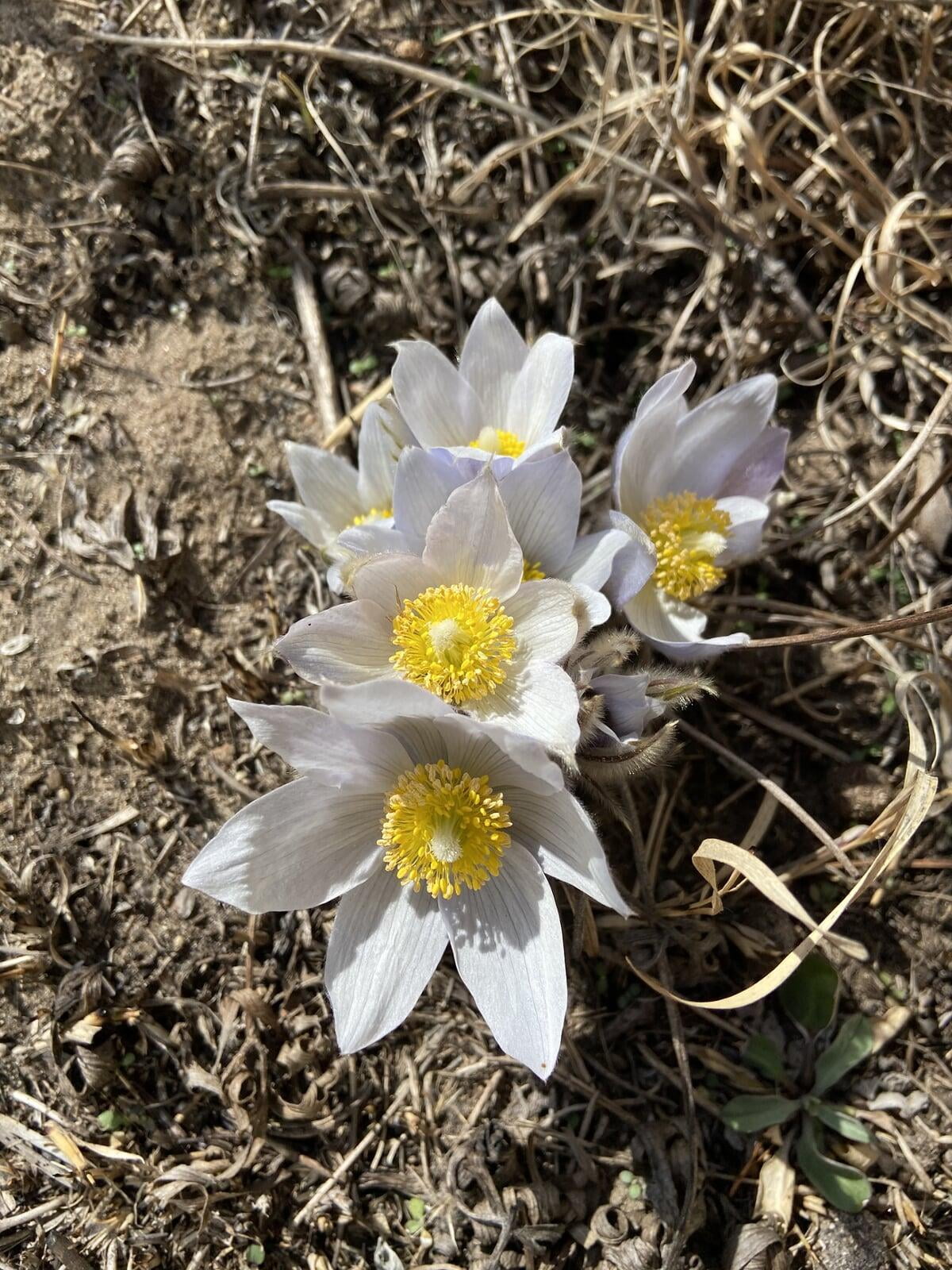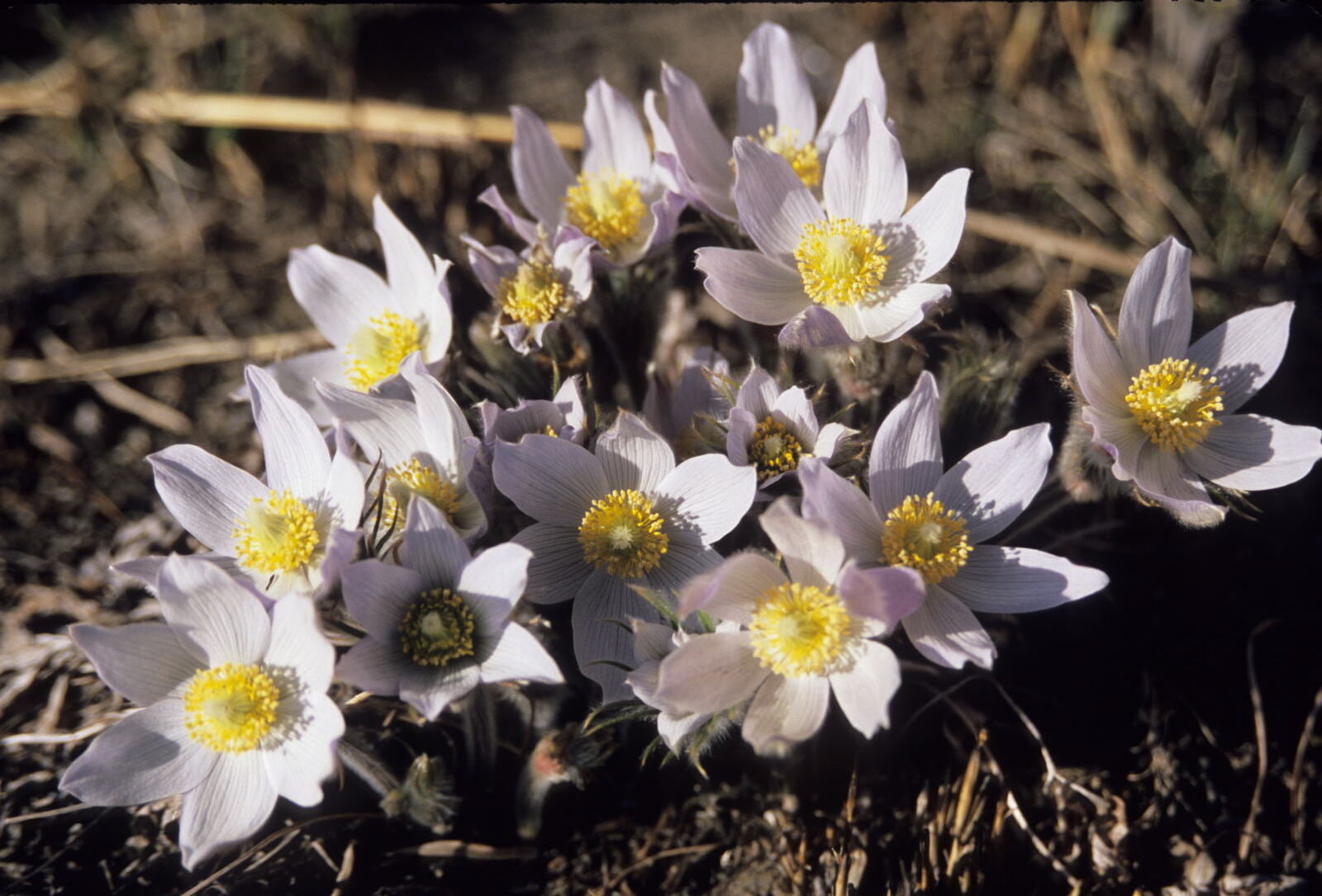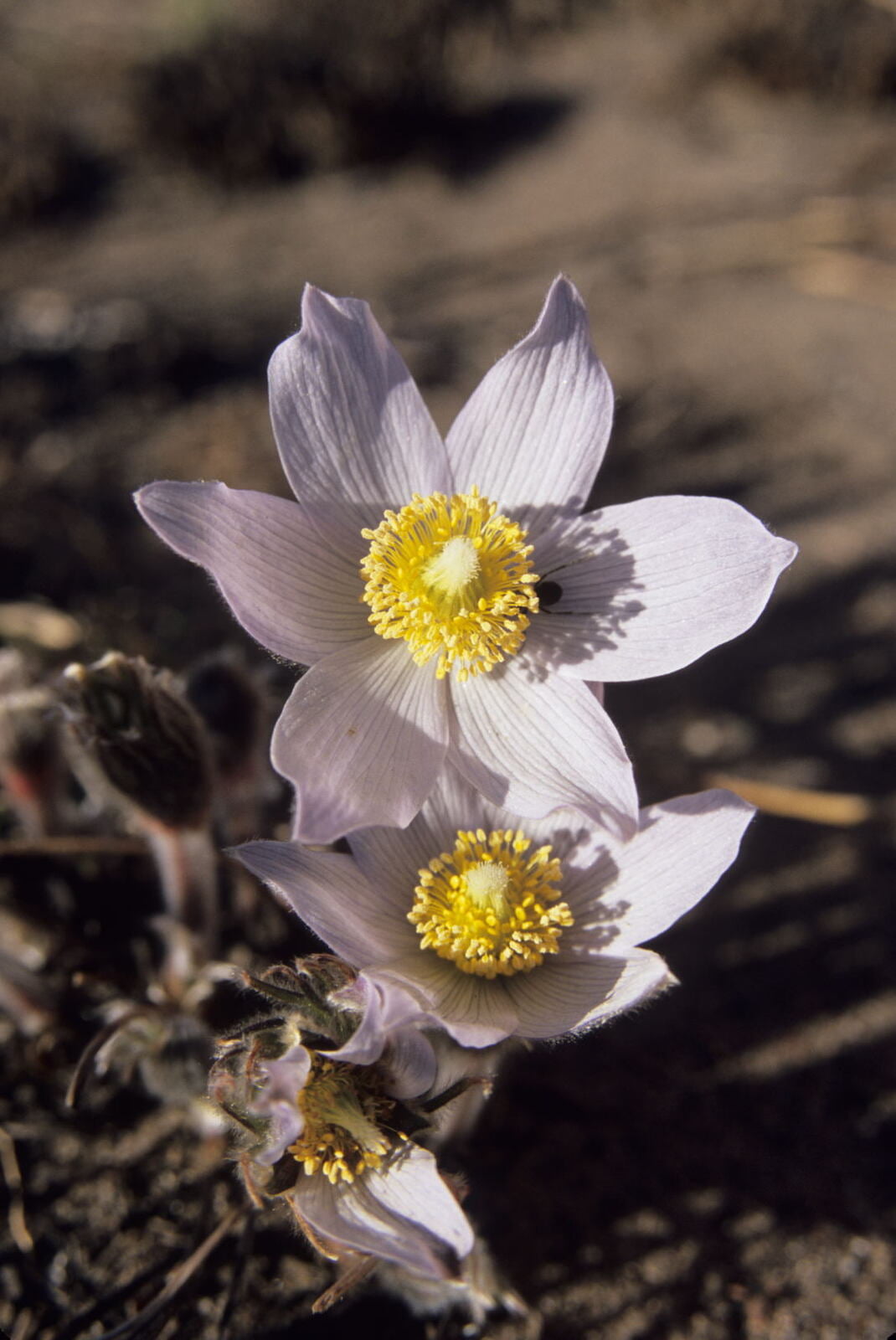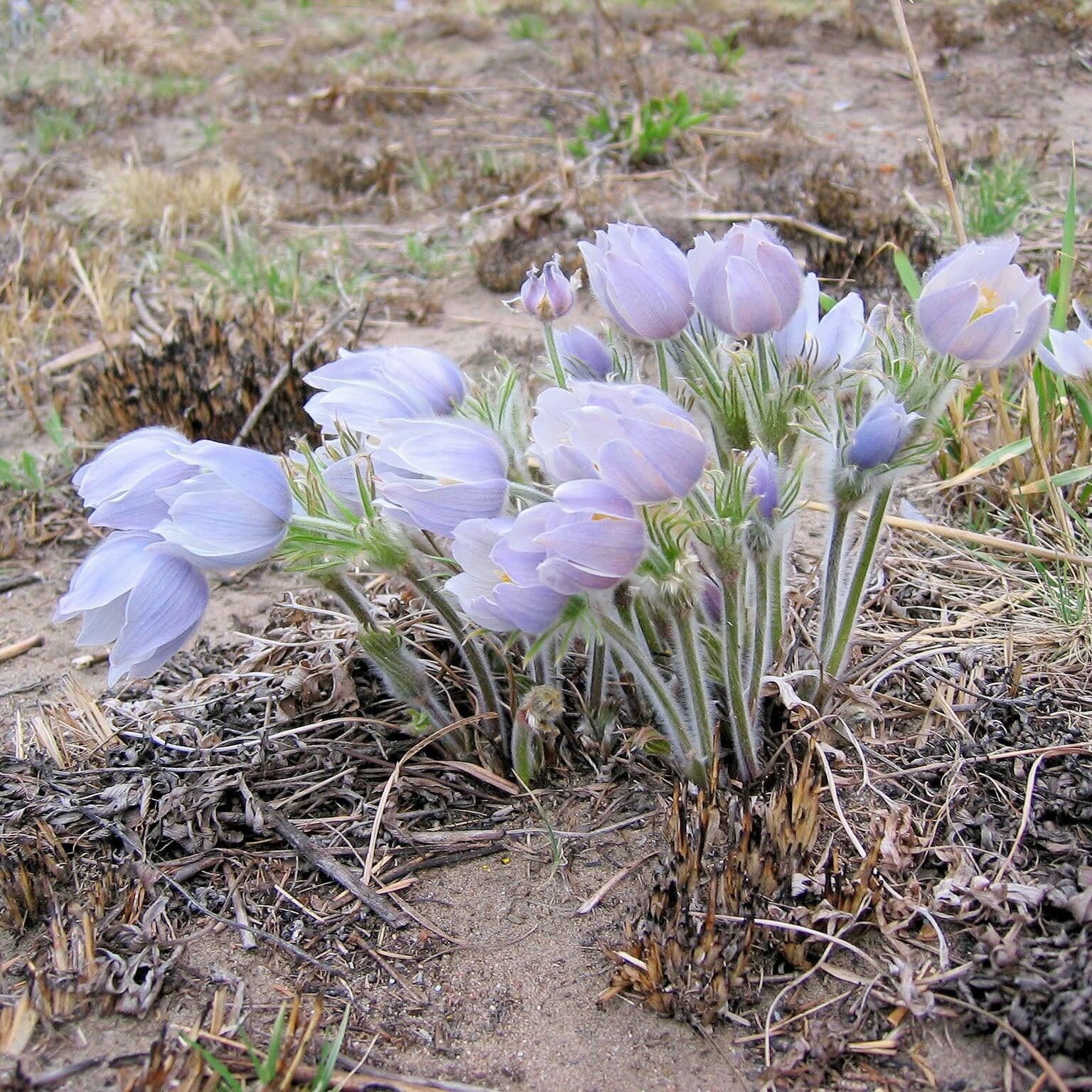Anemone patens
Pasque flower Description:
Anemone patens, also known as the Pasque flower or prairie crocus, is a herbaceous perennial plant native to North America. It is a member of the buttercup family and is known for its striking beauty and resilience. Anemone patens typically grows up to 12 inches in height and features fuzzy stems, fern-like leaves, and large, showy flowers. The flowers are typically blue, purple, pink, or white, and bloom in early spring, often before the snow has fully melted. The plant thrives in well-drained soils and prefers full sun to partial shade. Anemone patens is an excellent choice for wildflower gardens, rock gardens, and other naturalized landscapes. It also provides ecological benefits as a food source for pollinators such as bees and butterflies.
Native Range:
The Pasque flower is native to Minnesota and many midwestern states including Wisconsin, michigan, and Illinois. Additionally, its range spreads westward to Washington and south to New Mexico.
Standard Plant Information:
Plant Height: 3" - 18" inces
Bloom Time: March - May
Preferred Habitat: Does well in part shade to sun and prefers dry sandy or rocky soil. Can also be found in open prairies and woods.
Sowing:
For most homeowners, the best option is to scatter seed on the ground by hand broadcasting at a minimum of 16-64 pls ounces per acre. For even coverage, we recommend that you broadcast seed in perpendicular rows across the site to ensure even coverage.
You’ll want to broadcast any grass seed first, which will get raked into the soil lightly. Next, it is ideal to mulch the area lightly with either a clean (no seed) straw or preferably with our native Little Bluestem straw, sold at our retail garden centers. After a light mulching is complete, now it’s time to broadcast your native wildflower seeds, which should not be raked into the soil. A good rain or watering is sufficient to cover the seed.
Planting:
Simply dig a hole in the soil slightly larger than the plant’s roots. Ensure that the soil line of the plant is maintained during the transfer (i.e. the plant should be at the same level with the ground as it was in the pot). Pack any loose dirt back around the plant and make sure you water it well the same day to ensure it has the best chance of survival.

